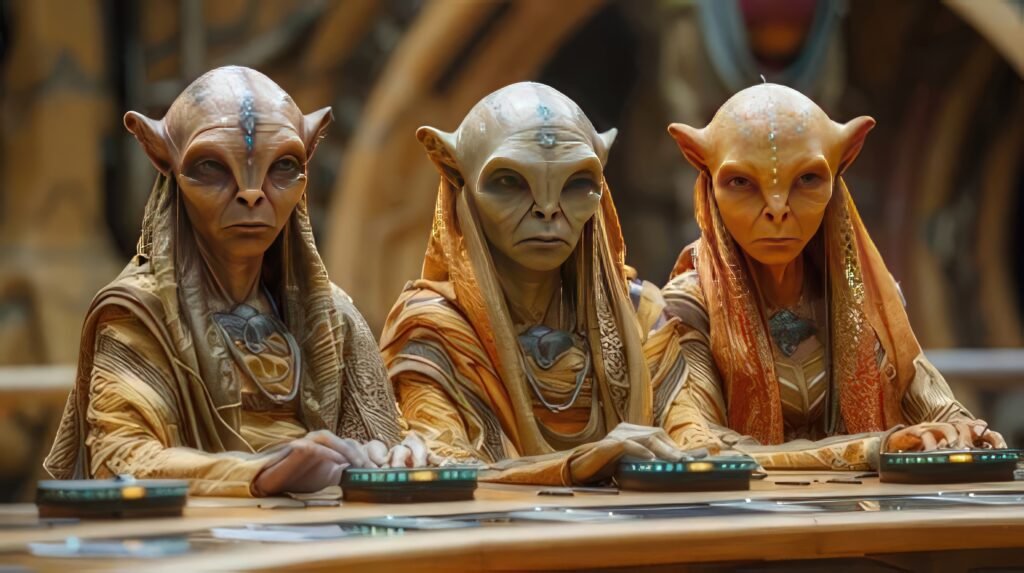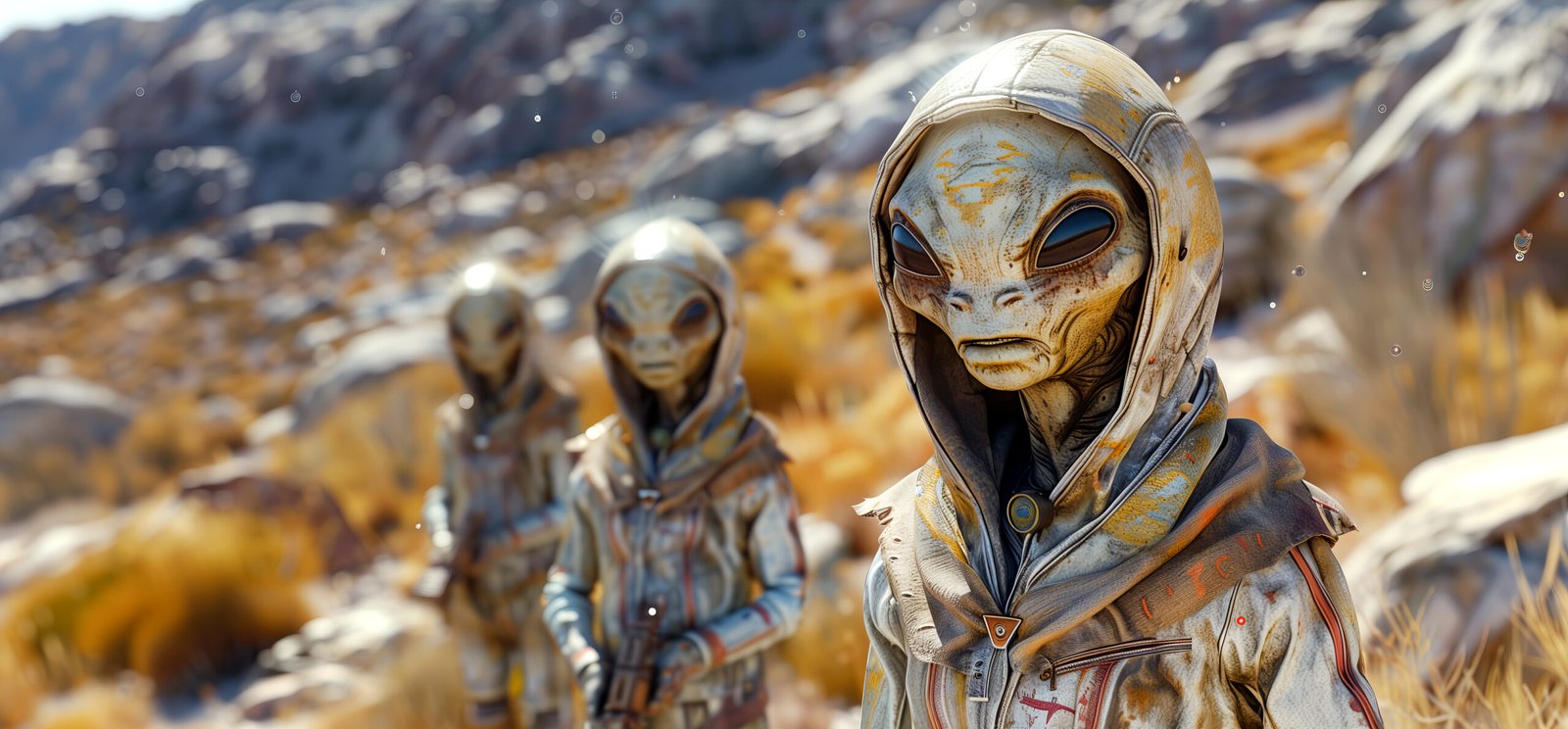The ancient aliens theory, also known as the ancient astronaut theory, has intrigued the world for decades. It proposes that extraterrestrial beings visited Earth in the distant past, influencing human civilizations, technologies, and cultures. From mysterious monuments to unexplained advancements in ancient societies, the theory suggests that our ancestors might not have achieved these feats on their own. But where did this theory originate? And what evidence supports it? Let’s explore the fascinating world of ancient aliens, unraveling the mysteries and examining the evidence that keeps this theory alive.

The Birth of the Ancient Aliens Theory
The modern fascination with ancient astronauts began in the mid-20th century. Swiss author Erich von Däniken is often credited with popularizing the concept in his 1968 book, Chariots of the Gods?. The book raised provocative questions: How did ancient civilizations achieve technological and architectural marvels without advanced tools or knowledge? Could they have received help from alien beings?
Von Däniken’s ideas were not entirely new. For centuries, people have speculated about gods and beings descending from the heavens in various mythologies and religions. These stories were often interpreted as divine interventions, but von Däniken suggested that they could be misunderstood descriptions of alien encounters. His theory was met with both fascination and skepticism, but it sparked a global conversation.
Ancient Texts and Mythologies: Hidden Clues?
One of the strongest arguments for the ancient aliens theory lies in ancient texts and mythologies. Many cultures around the world describe gods or celestial beings descending from the skies, sometimes in what appear to be advanced flying machines. These stories can be found in the ancient Sumerian, Indian, Egyptian, and Greek civilizations, among others.
For instance, in the ancient Indian epics, Mahabharata and Ramayana, there are detailed descriptions of flying machines known as Vimanas. These vehicles were said to soar through the skies and even engage in aerial battles. While these stories are often regarded as myth, ancient alien theorists argue that they could be descriptions of advanced alien technology witnessed by ancient humans.
Similarly, in the Sumerian texts, the Anunnaki are described as gods who came to Earth from the heavens. Could these gods have been extraterrestrial beings? Supporters of the ancient aliens theory point to these stories as potential evidence that our ancestors were documenting real encounters with visitors from other worlds.
Monumental Marvels: Alien Technology or Human Genius?
The construction of massive monuments and structures across the ancient world is often cited as evidence of alien intervention. The pyramids of Egypt, the megalithic stones of Stonehenge, the giant Moai statues of Easter Island, and the intricate Nazca Lines in Peru all raise questions about the capabilities of ancient civilizations. How did they move such enormous stones with limited technology? How were these structures aligned so precisely with celestial bodies?
One of the most discussed sites is the Giza pyramid complex in Egypt. The Great Pyramid of Giza, built over 4,500 years ago, remains one of the most remarkable engineering achievements in human history. Its construction involved moving and assembling over 2 million limestone blocks, some weighing up to 80 tons. While mainstream archaeology credits human ingenuity, some ancient alien theorists argue that extraterrestrial technology may have been involved. They suggest that aliens provided advanced knowledge or machinery to assist in the construction process.
In Peru, the Nazca Lines—giant geoglyphs etched into the desert floor—have baffled researchers for decades. From the ground, these massive drawings are nearly impossible to decipher, yet from the air, they form intricate shapes, including animals, plants, and geometric figures. Since the lines are best viewed from above, ancient alien theorists propose that they were made for—or possibly by—extraterrestrial visitors who could observe them from the sky.

Unexplained Technological Advances
Another cornerstone of the ancient aliens theory is the unexplained technological advancements of ancient civilizations. Throughout history, societies have achieved impressive feats of engineering, mathematics, and astronomy that seem to surpass the knowledge available at the time. Could alien intervention explain these rapid leaps in technology?
One example is the Antikythera mechanism, an ancient Greek device discovered in a shipwreck in 1901. Believed to date back to 150-100 BCE, this complex, clock-like mechanism was used to predict astronomical events, such as eclipses. Its intricate gears and dials were so advanced that scientists initially believed it was a modern forgery. However, further analysis confirmed its authenticity. How could such a sophisticated device exist in an era long before the invention of modern machinery?
Similarly, ancient peoples had an astonishing understanding of astronomy. The Mayans, for instance, accurately predicted solar eclipses and tracked the movements of planets without the aid of modern telescopes. Some researchers suggest that this knowledge might have been passed down by alien beings, who shared their advanced understanding of the universe with early humans.
Alien Depictions in Ancient Art
Ancient art also provides curious evidence for the ancient aliens theory. Throughout history, cultures have produced artwork that seems to depict beings and technologies that are out of place for their time. From ancient cave paintings to sculptures, there are numerous examples of what could be interpreted as representations of alien visitors.
In the Tassili n’Ajjer caves in Algeria, for example, prehistoric rock art dating back thousands of years depicts strange figures with large, bulbous heads and elongated limbs. These figures, often referred to as “ancient astronauts,” resemble the modern-day portrayal of extraterrestrial beings. Were these simply artistic expressions, or could they represent something more?
Similarly, in the ancient Egyptian temple of Abydos, hieroglyphs appear to show modern vehicles, including what looks like a helicopter, a tank, and an airplane. These images have sparked heated debates, with some arguing that they are merely coincidental shapes, while others believe they are proof of alien technology observed by ancient Egyptians.
Skepticism and Alternative Explanations
While the ancient aliens theory has captivated the imagination of many, it is important to note that mainstream scientists and historians largely reject it. They argue that the achievements of ancient civilizations can be explained through human ingenuity, creativity, and hard work. Advanced engineering techniques, careful planning, and the use of simple tools and labor could account for many of the accomplishments attributed to extraterrestrial influence.
Moreover, skeptics point out that the ancient aliens theory often undermines the capabilities of ancient humans, suggesting that they were not capable of great feats without outside help. Many scholars believe that this theory is rooted in a misunderstanding of historical context and the underestimation of ancient technologies.
Conclusion: The Enduring Fascination with Ancient Aliens
Despite the skepticism, the ancient aliens theory continues to captivate people worldwide. The mysteries of ancient civilizations, coupled with the possibility of extraterrestrial contact, fuel the ongoing debate. Whether or not aliens played a role in our past remains an open question, but one thing is certain: humanity’s fascination with the unknown will continue to inspire exploration and curiosity.
As we uncover more about our ancient ancestors, perhaps we will one day find definitive answers to the age-old question: Are we alone in the universe, or have we always had visitors from the stars?








